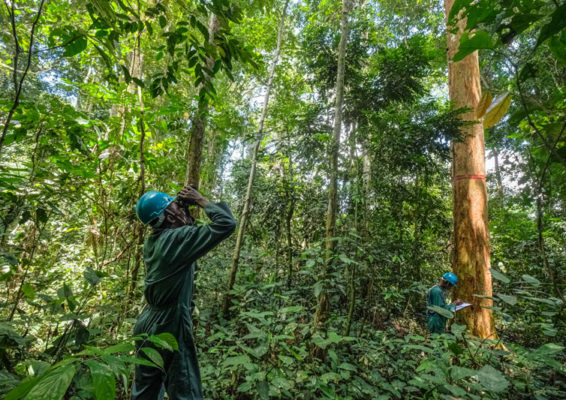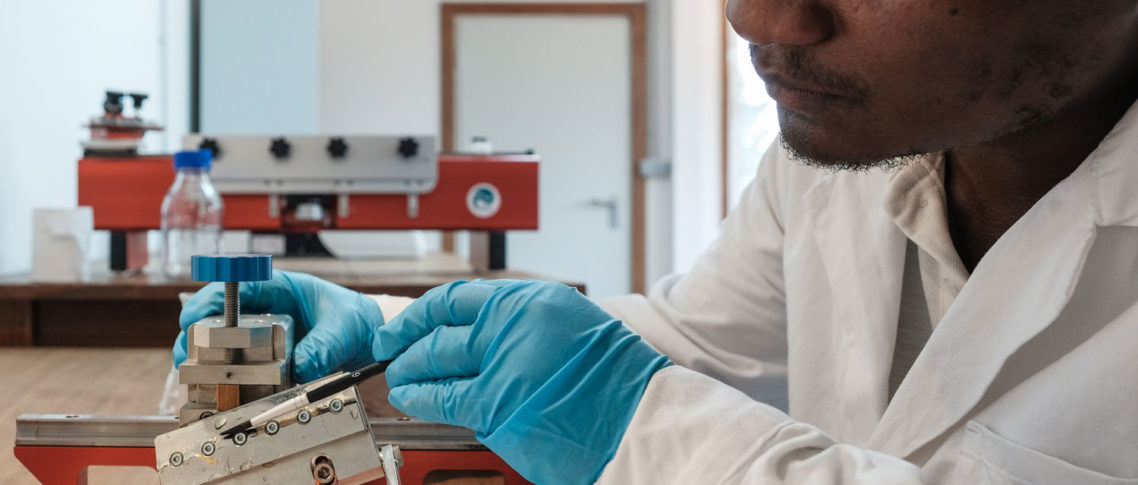Located right in the center of Africa, an extensive plateau of dense forest flanked by the imposing Congo River has served since the 1930s as the ideal setting for an innovative scientific facility dedicated to the study of the continent’s tropical forests and agriculture.
The Yangambi station has gone through good times and bad, but in a sign of its fortitude, it still stands today as a promising hub to nurture young African researchers looking for answers to some of the most pressing challenges facing the world’s second largest tropical forest, the Congo Basin.
Initially established with the aim of developing a science-based agriculture sector in the Belgian Congo, Yangambi reached its heyday in the post-war years (1945-1960), becoming one of Africa’s most reputable research centers. The rich legacy of this “golden era” includes detailed climate records, new banana and oil palm varieties, Central Africa’s largest herbarium, and a vegetation classification that remains relevant today.
Unfortunately, post-independence instability in the Democratic Republic of Congo (DRC) brought most research to a halt. Only over the past 15 years has Yangambi been gradually regaining its place as a meeting point for forestry specialists.
A new photo exhibit launched by the Center for International Forestry Research (CIFOR) and the Congolese Institute for Agronomic Research (INERA) delves into the glory days of Yangambi’s past and dynamic present, proposing an ambitious vision for the future in which sustainably managed forests and applied research serve as a driver for local development.
Titled “Koyeba Yangambi” (Koyeba means knowledge in Lingala), the exhibit comprises previously unpublished material from the photographic archive of the INERA library. It also features recent images by Axel Fassio, known for his environmental photography, many of which are in the CIFOR photo archives. The full collection will be available online until July 7.
A jewel of the Belgian crown
Under the leadership of Belgium’s Crown Prince Leopold III, the National Institute for the Agronomic Study of the Belgian Congo (INEAC) was established in 1933. Formed by a network of 37 research stations, the most prominent was established in Yangambi, 100 kilometers from the city of Stanleyville, which grew up around a colonial trading post and was subsequently renamed Kisangani in 1966, six years after DRC gained independence.
Its top-class facilities spanned 25,000 hectares, comprising multiple laboratories, experimental plots, conference rooms, living quarters and even a theater and an Olympic-sized swimming pool. With over a hundred scientists and many more technicians employed in Yangambi, it was a buoyant center that fostered innovation and flourished under a continual stream of creative ideas.

Yangambi also served as a venue for important events, including the Yangambi Agriculture Week in 1947, which was the first international agronomy congress held in Central Africa, while the Yangambi Conference in 1956 was the first to promote collaboration between French and English speaking foresters working in Africa.
INEAC was dismantled in 1962, and the center became part of the newly created INERA. Despite of decades of budget cuts and war, INERA’s staff managed to keep the center running and conserve its valuable archives, preserving the legacy of almost 30 years of outstanding research.
An unknown treasure
Despite Yangambi’s historical importance, it remains largely unknown to the Congolese population, according to the Director of INERA-Yangambi, Michel Lokonda. “Even when people have heard of it, they think that Yangambi is obsolete,” he said. “With this exhibit we aim to show that this couldn’t be farther from the truth. Our activities are still very relevant for the DRC and beyond.”
From 2006 to 2015 Belgium contributed with a new program to support INERA to improve crop production. Since 2017, Yangambi has received seed capital from the European Union to kick off numerous research, development and conservation activities aimed at promoting a sustainable development model that can reconcile environmental concerns with the needs of a growing population.
Ongoing activities, which are implemented by CIFOR in collaboration with INERA and other institutions, include large-scale restoration of degraded land, research on endangered flora and fauna, capacity building of local entrepreneurs, creation of sustainable livelihoods, and renovation of infrastructure.
These efforts have also been backed by Belgium, which is now investing to ensure Yangambi retains its status as a modern scientific hub. This includes training of INERA’s staff and construction of new facilities to increase the center’s capacity to conduct high-level research.
“Pictures speak louder than words, this is why we are proud to support this exhibit and contribute to give visibility to the many efforts carried out by our Congolese and international partners to make of Yangambi once again the regional reference in forestry research,” said Stefan Meersschaert, Minister-Advisor for Development Cooperation at the Embassy of Belgium in Kinshasa.
This research was supported by the Embassy of Belgium in Kinshasa and the European Union, and is carried out in partnership with INERA, UNIKIS, Africa Museum, Botanic Garden Meise, R&SD and Ghent University among other Congolese and international partners.
We want you to share Forests News content, which is licensed under Creative Commons Attribution-NonCommercial-ShareAlike 4.0 International (CC BY-NC-SA 4.0). This means you are free to redistribute our material for non-commercial purposes. All we ask is that you give Forests News appropriate credit and link to the original Forests News content, indicate if changes were made, and distribute your contributions under the same Creative Commons license. You must notify Forests News if you repost, reprint or reuse our materials by contacting forestsnews@cifor-icraf.org.


